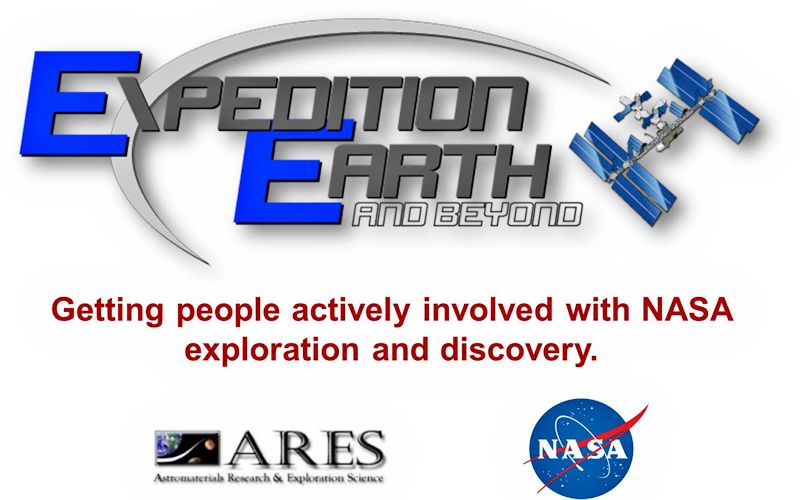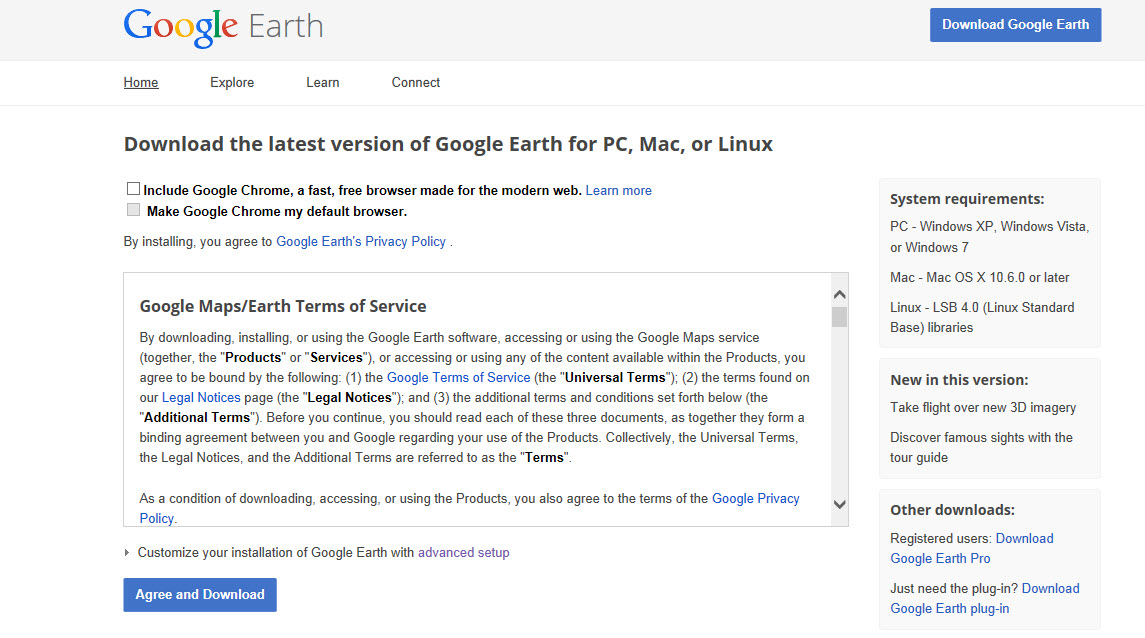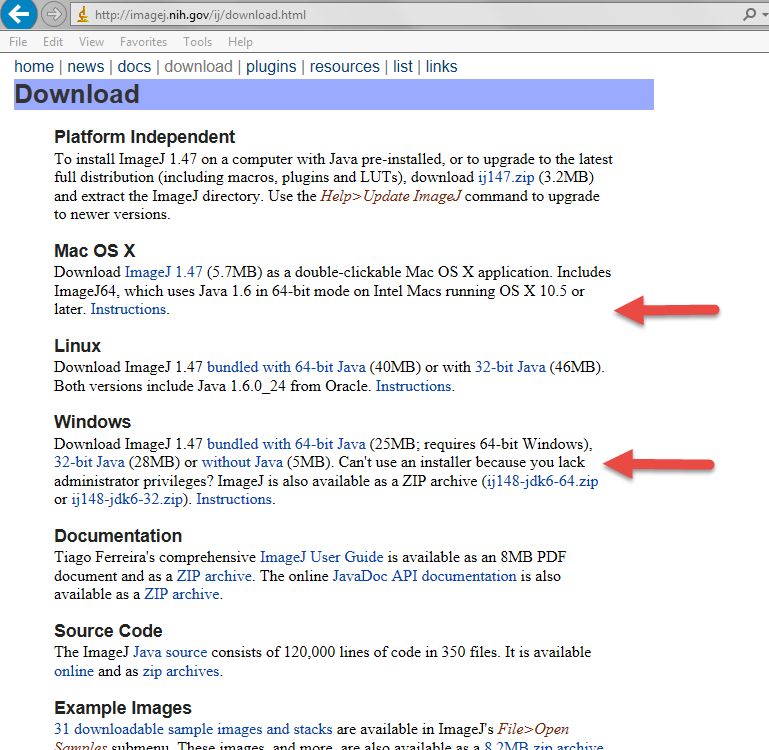

Welcome to Expedition Earth and Beyond! Over the coming weeks you will be introduced to the fascinating world of astronaut photography, and how to use the vast library of photographs taken by these people since the beginning of manned spaceflight. As you go through the various activities in this program you hopefully will formulate a question you want answered by using photographs taken from outer space. You may even get to request a photograph taken from the International Space Station to help you with your project!
Return to Above and Below to see what we did in the first course, or check on the progress of your Arizona State University sample.
FEBRUARY 25TH - GETTING STARTED
Before you actually start to work with the photographs you have to know how to describe what you are viewing. This week we'll start by looking at a familiar situation, and how a scientist would describe the components of the photograph. Then we'll look at some examples of astronaut photography, and see how you do. It's very important that you become comfortable with this process. In some cases you won't be able to identify what you're viewing in the photograph, especially if you are looking at another planet, so it's essential that you become comfortable with this skill.
Homework: Take a photograph of anything. It would be better if the subject was something natural, but that's up to you. Write a description of what's shown in the photograph similar to what we did in class, and send the image and the description to me. I'll post all of the results on Sunday. Click here to see the results. Try to mach the description to the photographs. Enjoy! Click here for e-mail link.
MARCH 4TH - SPHERES OF EARTH
As we are learning, nothing on this planet happens in isolation. There is no such thing as a strictly geologic, meteorological, biological, or hydrological event. Everything that naturally happens or that we do affects the planet. Scientists call this "System Science." Schools are getting away from strictly teaching "Earth Science," or "Life Science," or "Physical Science," and trying to show the interplay of the three. This week we will look at some astronaut photography, and attempt to identify which "spheres" of the Earth they include. You also will be asked to formulate questions you have about the photographs to begin getting ideas for your project.
Homework: If you don't already have Google Earth on your computer, I strongly recommend that you get it. Click here to go to the download site. WARNING!! I would strongly recommend NOT SELECTING to include Google Chrome in the download. I had all kinds of problems with my computer when I started using Google Chrome. They vanished when I got rid of it. Your start screen should look like this:

Those of you "attending" the cratering webinar at Johnson Space Center:
1. Go to
https://jacobs.webex.com/jacobs/j.php?MTID=m1a469f67f541ae76ad2147f230315392
2. Enter your SCHOOL name and your email
address.
3. Enter the meeting password: NASAeeab1
4. Click "Join".
MARCH 11TH - USING THE GATEWAY TO ASTRONAUT PHOTOGRAPHY WEBSITE
This week we'll finish with the images you started last week, and take a look at what the various lenses used on the International Space Station can do. Here's a link to that topic. Then you hopefully will become comfortable with how to access photographs from the vast database of astronaut photographs. We'll look at the different methods you can use to find images, and the limitations on what's out there. We also will take a look at "The Process of Science." For those of you who will not be with us for this, or for those who want to practice, here's a link to the Word document I'll be using for this.
MARCH 18TH - USING THE GATEWAY TO ASTRONAUT PHOTOGRAPHY WEBSITE - PART 2
Hopefully you will come to the session with a question you want answered. You will be on your own to do what you want with the Gateway to Astronaut Photography website. As you look at various images your question will hopefully evolve. By the time you leave his session you should feel comfortable with what you need to do to find the answer! If you will be doing some measurements in your research you'll need image processing software. One of the simplest is Image J. You can get a free download here. (See image below). It's available for both Mac and PC. We'll do a brief introduction before you leave today. Those of you running OS 9 on the Mac should go here to download NIH Image software that does the same thing as Image J, only it's compatible with the older operating system.

MARCH 25TH - YOU'RE ON YOUR OWN!
There's no class this week. Use this time to search the astronaut photograph database for images to help you formulate your question. When we meet on April 1st, no joke, you will present your question to the group.
OUR RESEARCH QUESTIONS
How fast is the recovery from a major fire in a heavily vegetated area in western United States?
Is the Sahara in northern Nigeria encroaching on neighboring grasslands and bodies of water? And if so, how much?
How much time does it take for reforestation after the 1980 eruption of Mt. St. Helens?
What caused the formation of the unique Spider Crater in western Australia? How did it change the environment of that area?
APRIL 1ST - MEETING OF THE MINDS
This will be our first formal exchange of questions. You will have been exposed to many different environments and possible topics as we've looked at the Earth. Hopefully you've been able to research a topic, and formulate a question that can be answered using astronaut photography. Now you will share your work. What will the outcome be? Who knows? That's what this week is all about! Based on the discussion, you may decide to stick with our topic, modify it, or join in with someone who came up with something else! That's what science is all about!
APRIL 8TH - WORKING ON ANSWERING THE QUESTION
This week will be dedicated to computer lab work to help you answer your question.
APRIL 15TH - HOW DID WE DO?
It's presentation time! Did you answer your question? Do you want to submit a request for a photograph to be taken from the International Space Station?
Return to Home.